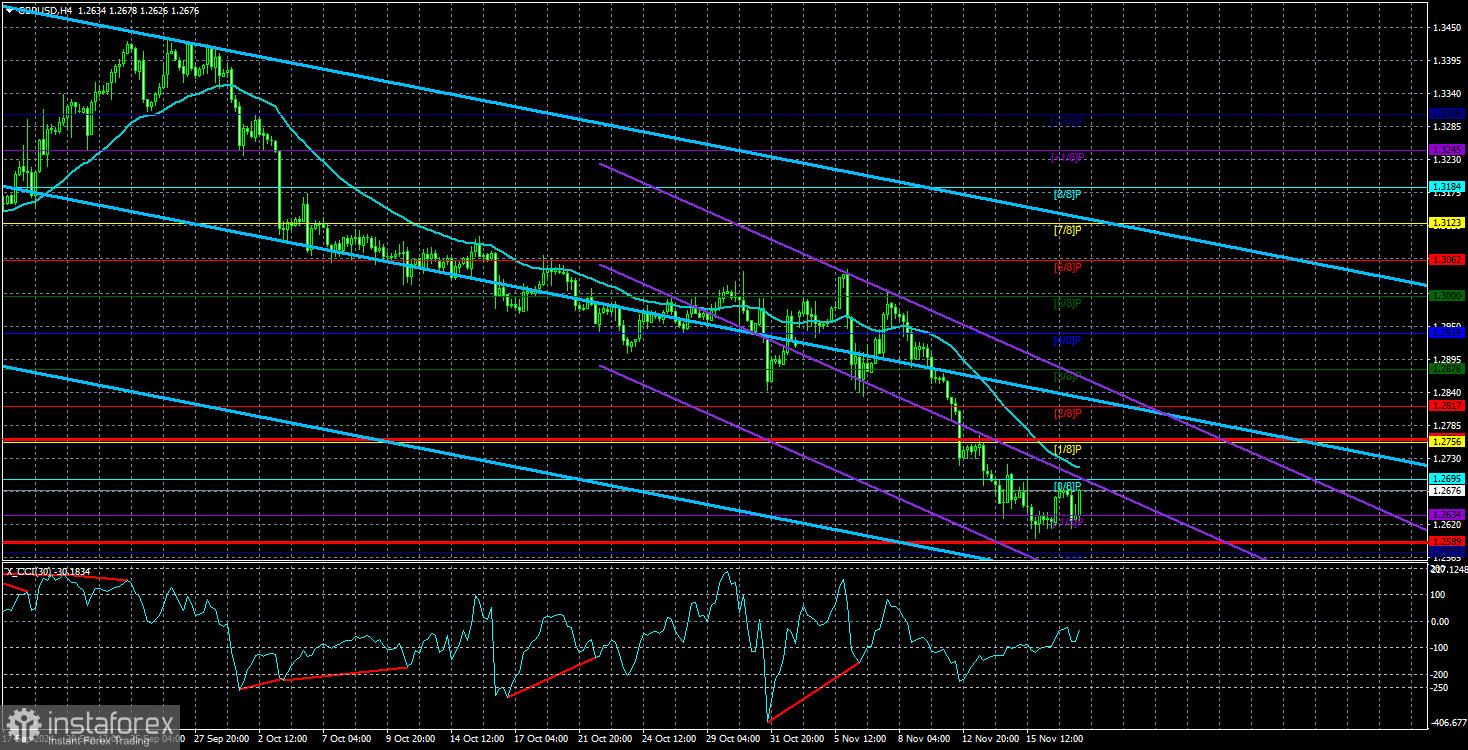Condições de Negociações
Ferramentas

On Monday, the GBP/USD pair hit a new local low; on Tuesday, little movement or meaningful correction was observed. The inability of the pound sterling to even correct highlights a significant issue: a lack of buyers in the market. This raises the question: why are buyers absent? From our perspective, the pound remains excessively overbought and unjustifiably expensive. This imbalance will likely sustain downward pressure on the currency for some time. If the pound rallied for nearly two years without solid justification, how much further can it fall when multiple factors support the case for its decline?
It's important to note that market makers could unpredictably start buying the pound again simply because they need this currency. Contrary to popular belief, large players, including commercial banks and corporate clients, buy currencies not just for profit but for operational needs. Such actions, often involving billions, can push the exchange rate in any direction, irrespective of fundamental or macroeconomic conditions.
Our goal is to assess whether the current market movements are justified. When they are not, we acknowledge this, as the behavior of major players is difficult to predict. While trends can be forecasted for most market participants, the movements must be logical and consistent.
For two years, the market priced in the anticipated monetary policy easing by the Federal Reserve. The pound has been declining for 1.5 months, which we believe is just the beginning. The 16-year downtrend remains intact, making the recent two-year rally on the weekly timeframe a deep and illogical correction.
The market seems to have forgotten that the Bank of England will lower its key rate just like the Fed and that the UK economy has been struggling since Brexit in 2016. All this time, the US economy has consistently outperformed the UK's over the last two years.
Despite this, market makers drove the pound higher, and analysts justified the rally with incorrect reasoning. This created an illusion of legitimacy for the pound's rise. It does not matter how much the pound has fallen over the past 16 years. However, what truly matters is the ongoing downtrend. The trend remains bearish until convincing signs of its end emerge (e.g., a 1,600-pip rally from current levels). While such a rally is possible, the question remains: what would be the fundamental justification?
The GBP/USD pair's average volatility over the last five trading days is 86 pips, which is considered "average." On Wednesday, November 20, the pair is expected to trade within the range of 1.2589 to 1.2761. The higher linear regression channel has turned downward, signaling a bearish trend. Despite multiple bullish divergences on the CCI indicator and occasional oversold conditions, no meaningful corrections have occurred.
The GBP/USD pair continues its downward trend. We do not recommend long positions, as the factors supporting the pound's rise have already been priced in multiple times. For those trading based solely on technicals, longs may be considered above the moving average with targets at 1.2817 and 1.2878. However, short positions remain more relevant, with targets at 1.2589 and 1.2573 as long as the price remains below the moving average.
Linear Regression Channels help determine the current trend. If both channels are aligned, it indicates a strong trend.
Moving Average Line (settings: 20,0, smoothed) defines the short-term trend and guides the trading direction.
Murray Levels act as target levels for movements and corrections.
Volatility Levels (red lines) represent the likely price range for the pair over the next 24 hours based on current volatility readings.
CCI Indicator: If it enters the oversold region (below -250) or overbought region (above +250), it signals an impending trend reversal in the opposite direction.
InstaForex analytical reviews will make you fully aware of market trends! Being an InstaForex client, you are provided with a large number of free services for efficient trading.
Podemos usar cookies para analisar os dados dos nossos visitantes, melhorar nosso site e medir o desempenho da publicidade. No geral, esses dados são usados para proporcionar uma melhor experiência no site. Mais informações.
Your IP address shows that you are currently located in the USA. If you are a resident of the United States, you are prohibited from using the services of Instant Trading EU Ltd including online trading, online transfers, deposit/withdrawal of funds, etc.
If you think you are seeing this message by mistake and your location is not the US, kindly proceed to the website. Otherwise, you must leave the website in order to comply with government restrictions.
Why does your IP address show your location as the USA?
Please confirm whether you are a US resident or not by clicking the relevant button below. If you choose the wrong option, being a US resident, you will not be able to open an account with InstaForex anyway.
We are sorry for any inconvenience caused by this message.
 Permanecer
Permanecer 



